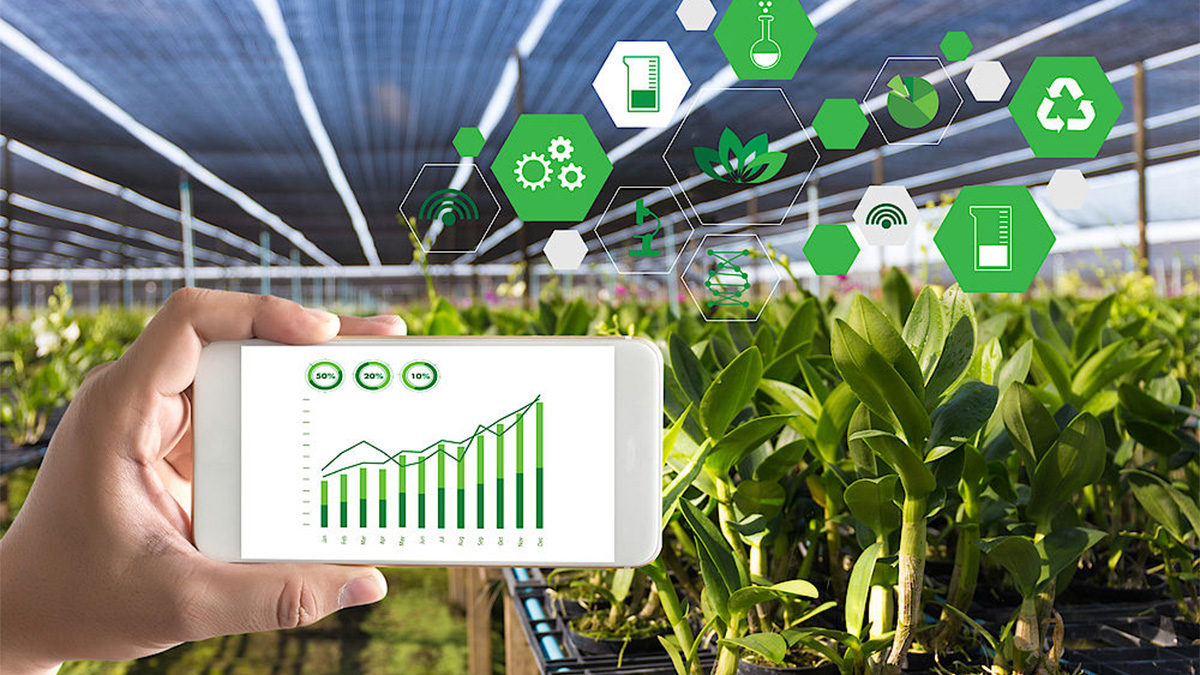With the development of digital technology and the impact and challenges of climate change, the smart agriculture application market has gradually grown in recent years.
What is Technology Agriculture?
Technology agriculture collects and records various crop data, such as growth and weather conditions, through sensors or cameras, and analyze the data using cloud data analysis to provide warnings or suggestions for crop management, or even directly control automatic machinery to accurately perform operations.
Changes in the Agricultural Industry - Smart Agriculture (Agriculture 4.0)
Smart agriculture is the adaptation of Industry 4.0 to agricultural. Agricultural is upgraded through the Internet of Things (IoT) using innovative digital technologies such as Big Data, AI, and robots to improve agriculture and streamline food chains.
Agriculture 4.0 aims to improve the sustainability of farming, increase production and quality of crops, and optimize agricultural activities throughout the food supply chain. Agriculture 4.0 is beneficial to farms and primary production and processing facilities, as well as large-scale manufacturers and traders etc. downstream in the food chain. It makes effective use of limited resources and maximize their functions.
Improve Industrial Efficiency and Effectiveness Through Technology Agriculture:
-
Science and technology research and development goals:
- The agricultural industry promotes the research, development, and integration of technology in domestic and foreign agricultural markets such as procedures for quarantine. It strengthens cooperation between research institutions such as colleges and universities and legal entities.
- It actively develops new technologies to maintain scientific and technological advantages in research and development.
- It promotes the management and application of agricultural intellectual property in the agricultural science and technology industries.
-
Industrialization of technology:
- Technology agriculture promotes the construction of agricultural science and technology parks, helping to build Taiwan into an Asia-Pacific agricultural biotechnology center and a subtropical flower center.
- The Agricultural Committee of the Executive Yuan has promoted R&D of agricultural enterprises and encouraged agricultural enterprises to cooperate and invest in R&D.
-
Agricultural Electronics:
- An agricultural action information platform has been established that uses text messages, emails, etc. to notify farmers of plant epidemic warnings, natural disaster subsidies, subsidies for farmers and fishermen’s children, and other information in real-time, to strengthen overall government services and care for farmers according to their needs.
- PDAs and GPS are used to conduct field area surveys and improve the collection of survey data to accurately grasp the crop conditions in these planting areas. This data is used to coordinate and control production and sales of crops in real time.
- RFID and two-dimensional barcode information tracking systems are used at various stages to collect data to be imported into practical agricultural applications. Production information is used to adjust the management of cultivation operations. Experts can provide cultivation management suggestions online in real-time, allowing farmers to accurately control the production period and quality of crops.
- A safe agricultural portal network has been established to integrate information about agricultural products, safe agricultural product labeling, and to provide production information and sales maps. It helps consumers easily get information on safe agricultural products and enhance public confidence in domestically produced agricultural products.
What technologies does technology agriculture have?
Technology agriculture can enhance the competitiveness of food production and promote the research and development of new products by grasping the preferences of consumers.
-
Bioinformatics:
Bioinformatics is a field of research that looks at the mathematics, information, research, statistics, processing, and utilization of biological data. Main research areas include gene identification, gene recombination, protein structure prediction, gene expression, and so on.
Bioinformatics is not a novel technology. Such technology has been widely used in the pharmaceutical field. In the era of easy access to information, consumers have many channels they can go to to find the product ingredients and nutrients they want. Food companies can use bioinformatics to understand more clearly the health effects of each ingredient on the human body and develop corresponding products to meet the market demands.
-
Ingredient Informatics:
Information about raw materials and product ingredients can be an indispensable tool for food companies when it comes to research and development and product promotion.
Taking vegetable protein as an example, when processing raw materials, it is necessary to consider the complete structure of the vegetable protein, digestion characteristics, the source of flavor, any source of alternative protein, etc. Recording all research and development data in a large ingredient database makes it possible to produce repeatable results and adjust development accordingly.
-
Alternative Proteins:
Plant-based products are sold at prices comparable to those of animal-based products. However, if the taste of the product is not good enough, no matter how good the product and nutrition are, there is no way to win people over and create a market.
Plant-based food technology understands how to use plant-based raw materials to produce products with an appearance, flavor, texture, and taste, similar to that of animal-based products. In the research and development of plant-based products, it is will be necessary to overcome cost challenges to develop marketable products.
Prospects of Science and Technology Agriculture:
In this era of continuous technological advancement, hardware and software technologies can be combined to develop low-waste, high-value agriculture. Transforming traditional farming methods to systematically increase efficiency will allow even small farms to produce for the masses.
Stable agriculture is often the key to the sound development of a country, and "Industry 4.0" brings information technology to the manufacturing industry. Agriculture 4.0 not only brings agricultural talents close to science and technology, but also brings science and technology people into the countryside, and uses the wisdom of a new generation to create a new agricultural economy.






.jpg)







